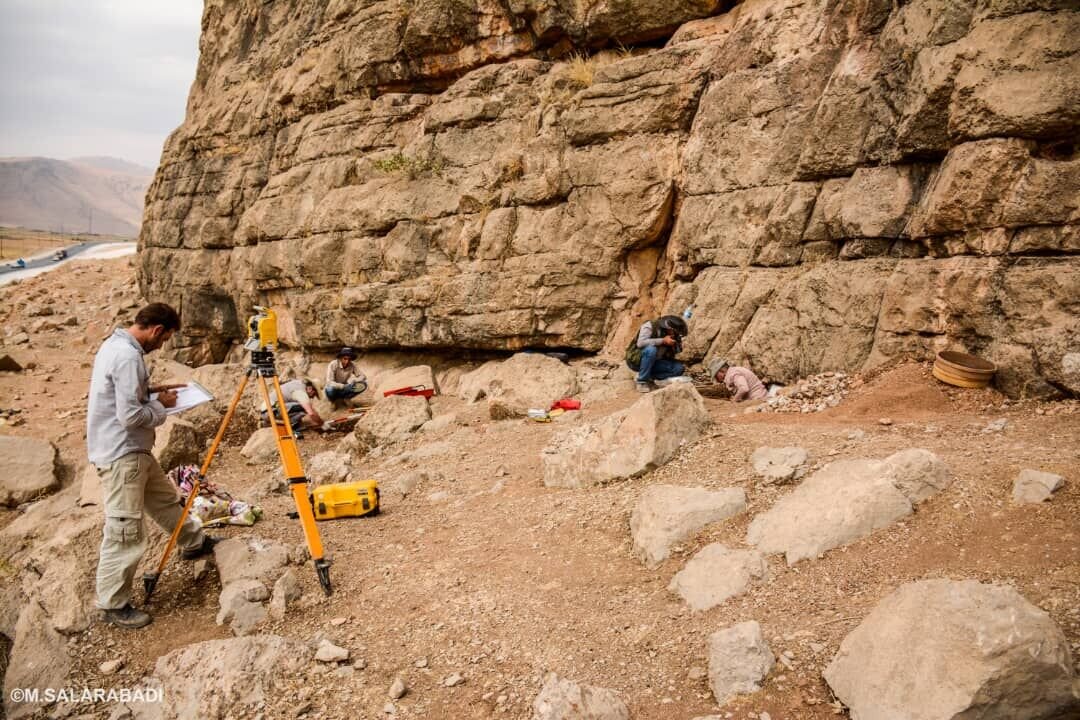Tracing human history: Iran’s Bawa Yawan yields remarkable Palaeolithic arts

TEHRAN—One of the oldest known references to the human being can be traced in Bawa Yawan, a rock shelter situated in the Kermanshah region of western Iran.
According to the top Iranian archaeologist, Saman Heydari-Guran, rock art discovered in Bawa Yawan, is the oldest evidence of human ethology based on signs in the Iranian plateau.
Those rock arts open us a direct window to the complex human behavior that is difficult to obtain in other ancient remains of the late Pleistocene era, CHTN quoted Heydari-Guran as saying on Wednesday.
“Paleolithic rock art has been discovered in various forms across the globe, including rock-carved portraits and abstract signs. They have always been an important and, at the same time, fascinating topic for archaeologists and anthropologists.”
He said although many rock arts and abstract concepts had been discovered in different areas such as Africa, Europe, Southeast Asia, and Australia, they have been the subject of extensive research for these regions. “But no substantiated evidence of these phenomena had been reported for Iran.”
“Now, Paleolithic research in Kermanshah has led to the very important discovery of rock motifs in one of the most key places in this region,” the archaeologist said.
Conducting multi-faceted research shows, Bawa Yawan motifs are comparable with European Paleolithic rock motifs in terms of form and content, he said.
“Moreover, based on a statistical analysis, motifs discovered at Bawa Yawan can be related to the phenomenon of having children and recording it.”
The closest layer associated with rock art at Bawa Yawan is estimated to date from 13,400 years ago, the archaeologist added.
According to an article co-authored by Heydari-Guran, Nemat Hariri, Martin Kehl, Samran Asiabani, Faramarz Azizi, and Elham Ghasidian, excavations at the Bawa Yawan rock shelter have obtained a long history of hominin occupation from the Middle Paleolithic (MP) to the Epipaleolithic periods. In the upper MP layer, a Neanderthal tooth was found dated to roughly 45–40 kyr.
Preliminary studies on the MP materials and chronostratigraphic data have revealed that the Neanderthal occupation in this area declined dramatically to around 43 kyr. (The abbreviation kyr means ‘thousand years’). After this period, the area experienced a slight growth in MP occupation. We argue in this paper that Neanderthal societies were able to endure during one of the harsher climatic periods and temporarily revived their demography just before their extinction.
The authors say the Bawa Yawan rock shelter represents the first Paleolithic site in the whole of the Zagros to denote a diachronic change in the Paleolithic sequence associated with absolute dating, albeit on a limited basis.
“During our three seasons of excavation (2016–2019) at the Bawa Yawan rock shelter, we have recovered more than eleven thousand in situ lithic artifacts from the MP through the Epipaleolithic.”
As mentioned by Heydari-Guran, the Iranian Plateau is a geological formation that runs through southwest Asia and the Caucasus, between the Tigris River to the west and the Indus River to the east.
“It is a part of the Eurasian Plate that is wedged between the Arabian and Indian Plates. The Zagros Mountains consist of almost all the western and southwestern Iranian Plateau, forming a continuous range made up of numerous peaks of over three thousand and four thousand meters above sea level.”
The long-term presence of Neanderthals in western Eurasia, according to the article, suggests that they were a resilient hominin subspecies. Archaeological records and fossil evidence show that towards their extinction, their territory was dramatically limited for various reasons, including restricted food resources.
AFM
Leave a Comment